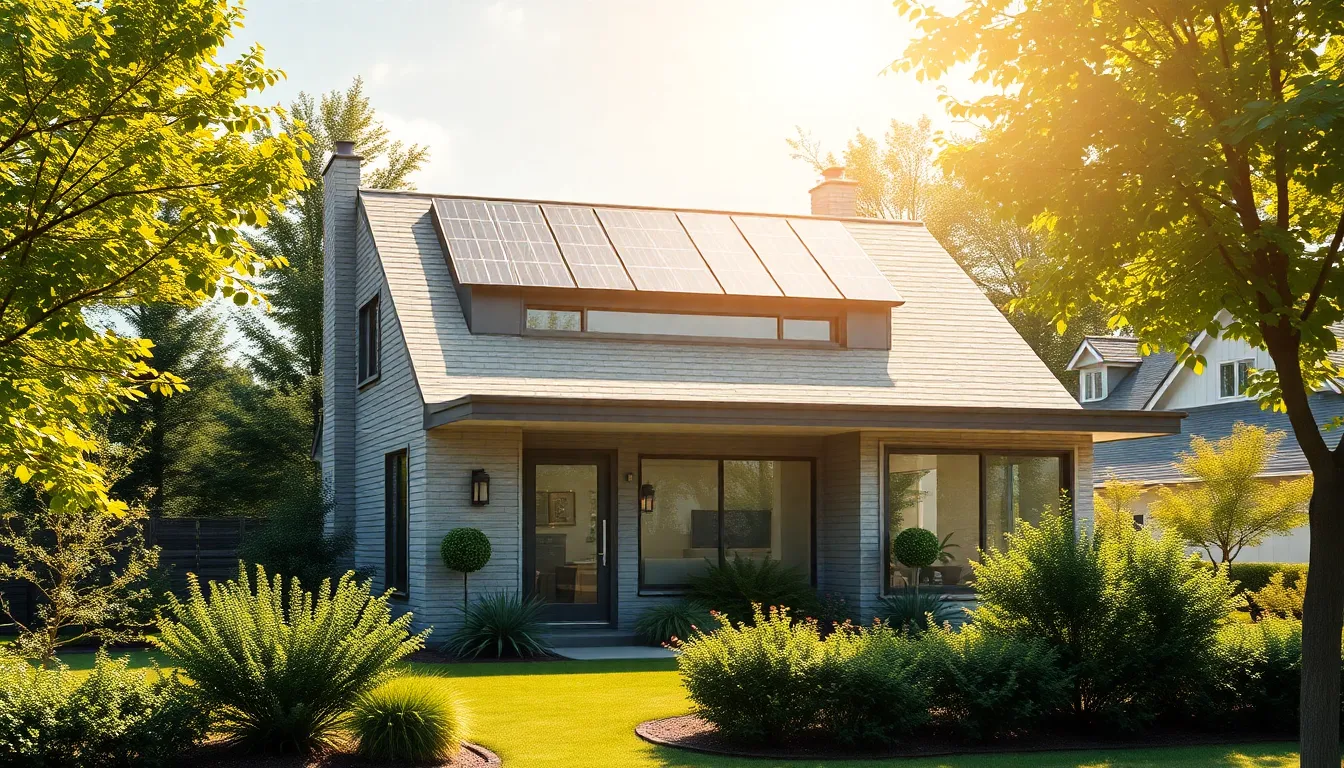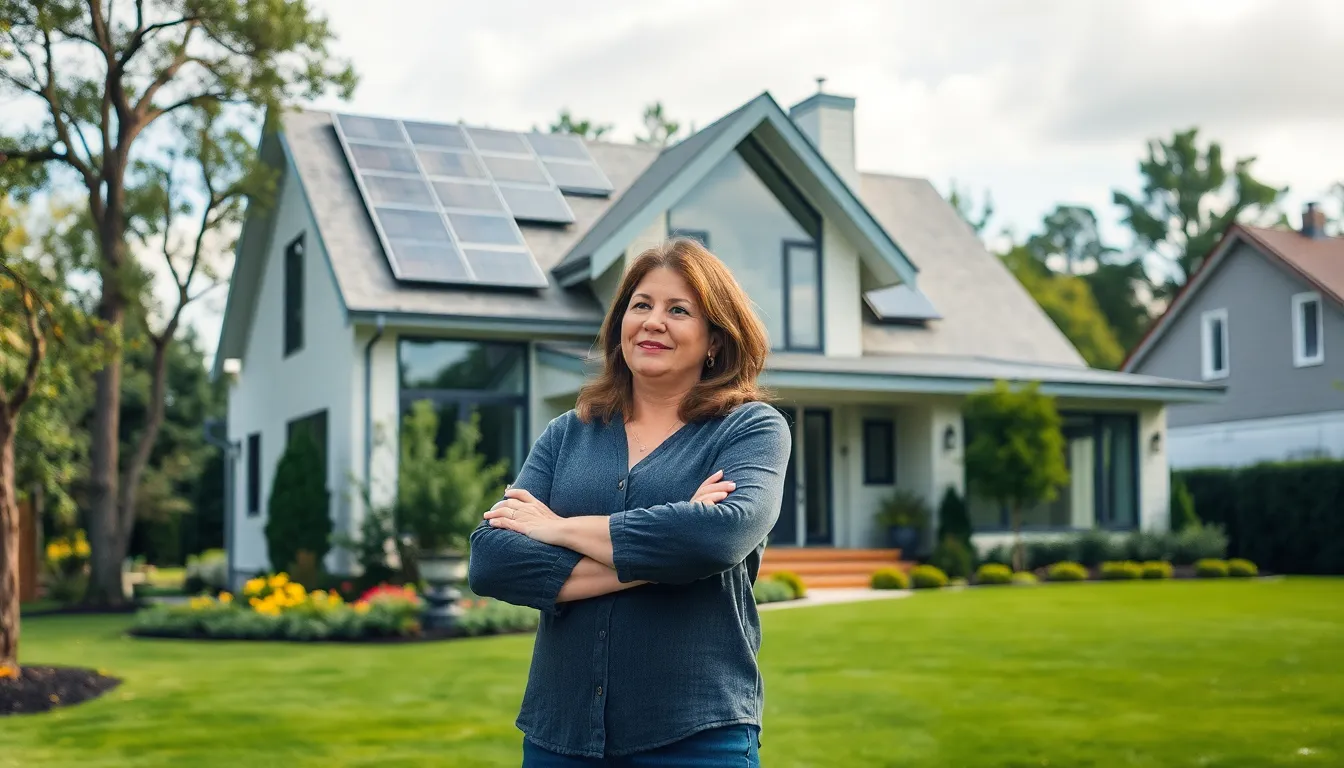In today’s world, the push for sustainability has never been stronger, and energy-efficient homes are at the forefront of this movement. As homeowners seek to reduce their carbon footprint and save on utility bills, the demand for eco-friendly living spaces continues to grow. Energy-efficient homes not only benefit the environment but also enhance comfort and increase property value.
With advancements in technology and design, it’s easier than ever to create a home that consumes less energy while providing the same level of comfort. From smart appliances to improved insulation, these features play a vital role in minimizing energy waste. Embracing energy efficiency is not just a trend; it’s a smart investment for the future.
Table of Contents
ToggleWhat Is an Energy-Efficient Home?
An energy-efficient home maximizes energy use while minimizing waste. These homes utilize advanced materials and technologies that significantly lower energy consumption. Features often include high-performance insulation, energy-efficient windows, and air sealing, which maintain comfortable indoor temperatures.
Energy-efficient homes incorporate energy-saving devices and systems. Examples include programmable thermostats, Energy Star appliances, and LED lighting. These features reduce electricity usage without sacrificing comfort or convenience.
Energy-efficient homes often rely on renewable energy sources. Solar panels and geothermal heating systems provide sustainable energy options. By harnessing natural resources, these homes reduce reliance on fossil fuels and further decrease utility bills.
Building an energy-efficient home often entails strategic design choices. Orientation, landscaping, and building materials influence energy performance. Thoughtful design can enhance natural ventilation and daylighting, resulting in lower energy demands.
Overall, energy-efficient homes support sustainable living, contributing positively to environmental health and financial savings.
Benefits of an Energy-Efficient Home

Energy-efficient homes offer significant advantages, including cost savings and positive environmental impacts. By integrating advanced technologies and sustainable practices, these homes provide a variety of benefits to homeowners and the planet.
Cost Savings
Cost savings arise from lower energy bills in energy-efficient homes. By implementing high-performance insulation and energy-efficient windows, homeowners reduce heating and cooling expenses significantly. Energy Star appliances and LED lighting further contribute to decreased electricity usage. On average, energy-efficient homes can save homeowners 10-50% on utility bills each year. Additionally, many regions offer tax credits and rebates for energy-efficient upgrades, providing further financial incentives. Over time, these savings can recoup initial investments and promote long-term financial stability.
Environmental Impact
Environmental impact stands out as a key benefit of energy-efficient homes. These homes substantially lower greenhouse gas emissions through reduced energy consumption. Utilizing renewable energy sources such as solar panels contributes to a significant decrease in reliance on fossil fuels. Energy-efficient building materials and methods minimize resource depletion and waste generation. With these measures, energy-efficient homes support a more sustainable future, helping to combat climate change effectively. By reducing a home’s carbon footprint, homeowners contribute positively to the health of the planet, enhancing overall ecological well-being.
Key Features of Energy-Efficient Homes
Energy-efficient homes incorporate various features that enhance performance and reduce energy consumption. These elements not only promote sustainability but also improve indoor comfort and affordability.
Insulation and Sealing
Insulation and air sealing are fundamental components of energy-efficient homes. High-performance insulation, made from materials like spray foam or cellulose, minimizes heat transfer, maintaining stable indoor temperatures year-round. Effective sealing of gaps and cracks prevents air leaks, eliminating drafts that can increase heating and cooling costs. It’s common for homes with adequate insulation and sealing to experience energy savings of 10-50% on utility bills. Superior insulation combined with strategic placement minimizes the strain on heating and cooling systems, further contributing to energy efficiency.
Energy-efficient Appliances
Energy-efficient appliances play a crucial role in reducing energy consumption within homes. Devices that earn the Energy Star label meet strict efficiency guidelines set by the Environmental Protection Agency. These appliances use 10-50% less energy than standard models. Examples include refrigerators, dishwashers, and washing machines, which optimize performance without sacrificing effectiveness or convenience. Installing programmable thermostats and LED lighting enhances energy management, allowing homeowners to track and reduce power usage while increasing comfort in their living spaces.
Tips for Creating an Energy-efficient Home
Homeowners can take several actionable steps to create an energy-efficient home. Implementing these tips helps conserve energy, reduce costs, and support environmental sustainability.
Conducting an Energy Audit
Conducting an energy audit identifies energy use patterns and areas for improvement. Homeowners can assess efficiency through professional energy assessments or DIY methods. Key elements to evaluate include:
- Insulation Quality: Check insulation levels in attics, walls, and basements.
- Air Leaks: Inspect for drafts around windows, doors, and ducts. Sealing leaks significantly reduces heating and cooling costs.
- Appliance Efficiency: Examine existing appliances for energy ratings and consider upgrades to Energy Star-certified models.
- HVAC Systems: Assess heating, ventilation, and air conditioning systems for efficiency. Regular maintenance improves performance.
Many utility companies offer free or discounted energy audits, providing valuable insights for homeowners.
Choosing Renewable Energy Sources
Choosing renewable energy sources enhances energy independence and lowers utility costs. Homeowners can consider various options, such as:
- Solar Panels: Installing solar photovoltaic systems generates electricity and reduces reliance on the grid. Federal and state incentives often help offset installation costs.
- Wind Turbines: In suitable areas, small-scale wind turbines can harness wind energy for residential use.
- Geothermal Systems: Utilizing the earth’s stable temperatures, geothermal heating and cooling systems offer an efficient alternative to conventional HVAC options.
Selecting renewable energy sources aligns with sustainability goals, further contributing to reducing carbon footprints and promoting energy-efficient living.
Embracing energy-efficient homes represents a significant step toward a sustainable future. Homeowners not only enjoy lower utility bills but also contribute to a healthier planet. By implementing advanced technologies and making strategic design choices, they can maximize energy efficiency while enhancing comfort and property value.
The integration of renewable energy sources further strengthens this commitment to sustainability. As awareness grows and technology advances, the trend toward energy-efficient living will likely continue to gain momentum. Investing in energy-efficient homes is not just a smart financial decision; it’s a vital contribution to environmental health and a more sustainable lifestyle.


